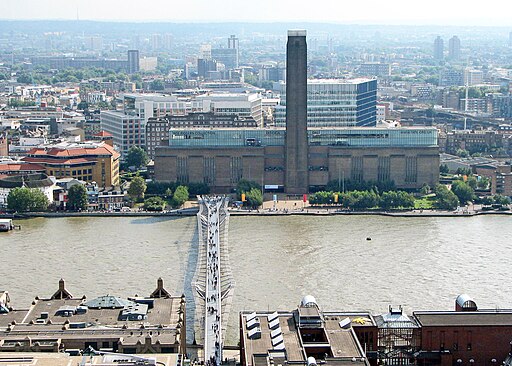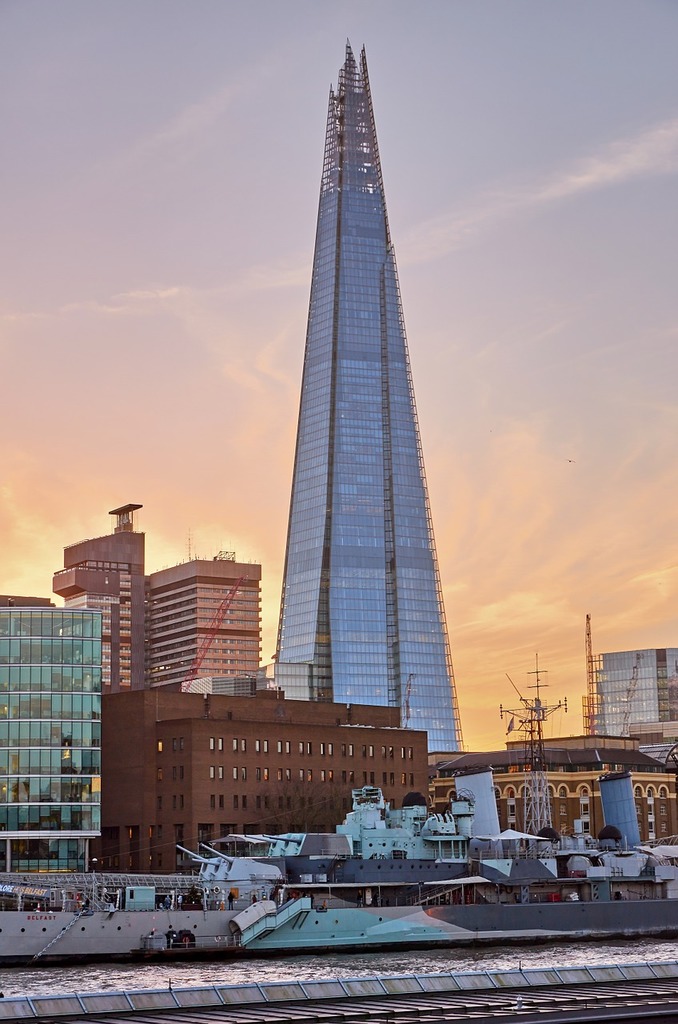
TOWER BRIDGE -THE LONDON LANDMARK SINCE 1894
London other attractions and things to do (Image credit-:Photo2023, CC BY 4.0, via Wikimedia Commons) Tower bridge is an iconic structure

Tate Modern is one of the four Tate galleries in UK. The others being Tate Britain, Tate Liverpool and Tate St Ives. These four Tate galleries displays the United Kingdom’s national collection of British art, and international modern and contemporary art. The original Tate gallery was founded in 1897 as the National Gallery of British Art, but was renamed to the Tate Gallery afterwards.
Tate Modern, is situated at the converted old Bankside Power Station which was closed in 1981 on the south side of the Thames. The signature of this building is its chimney which standing at 99m tall. The original architect of the power station was Giles Gilbert Scott who is famous for his iconic design of red telephone boxes. Swiss Herzog and de Meuron who are famous designing the Beijing National Stadium or “Bird’s Nest” are the conversion architects of this building.
The Turbine Hall was where the original turbines of the power station were located before it converted to the museum. From the top floor of the Switch House, which is also free, you get a spectacular view of the London skyline which is so impressive.
Henry Tate, a 19th century sugar merchant from Liverpool, is the reason for the existence of Tate Galleries by donating £80,000 and his collection of contemporary paintings to the British government. He is also famous for introducing sugar cubes to Britain.
It was opened by the Queen Elizabeth II on 11 May 2000 and now exhibits the national collection of modern art from 1900 to the present day, including some modern British art

Adress: Bankside, London SE1 9TG
Tube station near to it:
1) Southwark (Jubilee Line, 600 metres
2) Blackfriars: District and Circle Line, 800 metres
3) St Paul’s: Central Line, 1,100 metres
Bus:
Routes 40, 63 and 100 stop on Blackfriars Bridge Road
Route 381 stop on Southwark Street
Route 344 stops on Southwark Bridge Road
Entry to the collection is free for everyone. Booking is recommended for exhibitions.
Location: Level 1, Natalie Bell Building
Cafe, Bar, Venue- OPENING TIMES
Sunday to Monday 10.00–18.00,
Tuesday to Saturday 10.00–23.00
LOCATION-The Starr Foyer, Natalie Bell Building, Level 1, Blavatnik Building, Level 3
See your drawings come to life using our digital sketch pads at Tate Modern
There is a lively bar and enjoy a spectacular view of London
LOCATION-Natalie Bell Building, Level 5
Relax, recharge, and refuel in our exclusive Members Bar
LOCATION-Blavatnik Building, Level 1
Location-Natalie Bell Building, Level 6, open daily until 15.00 and select evenings.
Three Main areas you should not miss: 1) PERFORMER AND PARTICIPANT 2) MATERIALS AND OBJECTS 3) MEDIA NETWORKS
Here you can discover how artists working between the 1960s and the 1990s. The displays include a mix of intimate individual acts and choreographed actions which are directed by an artist and political activism.
Location: Blavatnik Building Level 3
Highlights

The Solemn Process 1964–2008 is an installation with twenty-one different metal sculptures of different dimensions and forms, and two large wall vinyls. This was created by Romanian artist Ana Lupas over a period of five decades. Medium used are steel, straw, wire mesh and 2 digital prints on vinyl. The name The Solemn Process refers to a traditional Romanian ritual relating to the harvesting of crops.
 Marchel Duchamp’s fountain sculpture
Marchel Duchamp’s fountain sculptureIn this department you can see how the artists have challenged the traditional art and cleverly used certain materials which are assumed as unsuitable for art for great art works. Here you can see a great display of art by great artists around the world use diverse materials.
Location:Natalie Bell Building Level 4 West
Highlights

This department portraits the impact of mass media and the ever-changing technologies in art form. They include from posters and paint to analogue and digital.
Location-Natalie Bell Building Level 4 East
HIGHLIGHTS

London other attractions and things to do (Image credit-:Photo2023, CC BY 4.0, via Wikimedia Commons) Tower bridge is an iconic structure

London other attractions and things to do (Image credit-Garry Knight, CC BY-SA 2.0, via Wikimedia Commons) The Shard is famous not
Receive new digital content weekly and stay on top of business news and trends.